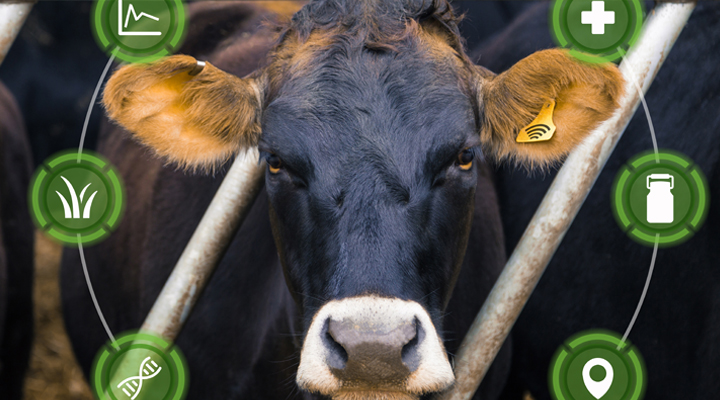
As we told you before, the digitalisation of the agri-food industry and the primary sector is one of the main priorities of the R&D&i policy in Europe for the next few years. Gradiant, as a reference technology centre, is driving this transformation through multiple initiatives in order to consolidate Galicia as an ICT innovation focused in agri-food digitalization and development of digital innovation hubs. But why is it important to accelerate this process? What system do we propose? Here’s why:
ICT technologies, the best ally for agri-food sector
Primary sector digitalization allows us to obtain in real time a big picture of what is happening on farms so we can adjust the use of resources, make accurate decisions and achieve greater production and profitability. In addition, it allows us to know closer the consumer and adapt the offer to the real demand on the market.
To do that, technology must be able to obtain accurate information about all the processes involved in: analyse, store and, above all extract value from data. Farming figures needs to be transformed into actionable information that can be used to make business decisions.
At Gradiant, we propose technology solutions for the primary sector based on three concepts: flexible deployment, information silos elimination and create a virtual reflex of the target reality.
Assistance to decision-making, resources optimization and cost savings
Flexible deployment addresses the challenge of system interconnection by focusing on the current limitations of lack of deployment and monitoring. We propose an architecture of gradual growth and easy integration through self-configuration of nodes and self-discovery of the services offered. By deploying a group of sensors to measure the humidity of the soil in different points in a plantation, for example, they will announce their presence and the type of measure they offer.
The synergies that could be triggered by data sharing among producers, customers and suppliers face a reality made up of isolated and independent information silos. Supressing these silos, eliminating the barriers posed by the use of heterogeneous technologies, many of them proprietary, seeks to offer greater interoperability of the information value. Accessing information from multiple sources enriches data processing, improving analysis and conclusions. For example, sharing information among farms reduces the risk of spreading pests; or accessing weather forecasting services improves planning and use of resources and/or machinery.
The virtual reflex is the digital characterization of a resource, process or product, that is, the representation of its qualities, attributes and capacities throughout the productive process so the state is known all over. This digitalization of the exploitations allows to bring in Data Analytics & Artificial Intelligence techniques for patterns estimation, events prediction, etc., improving the quality and the general traceability of the products, allowing to optimize processes and to carry out more precise simulations.
What are the benefits of digitization?
On the one hand, flexible deployment offers simplification and cost savings of system deployment thanks to gradual implementation and automatic configuration. On the other, it allows for increased monitoring and digitization of exploitations through scalable deployments of sensors, control platforms, IoT (Internet of Things) services or other embedded systems.
The elimination of information silos increases the real visibility of all the processes of the exploitations as well as serving as a source of information to improve decision making thanks to Big Data analysis.
Finally, the virtual reflex allows a better organization of the information providing benefits as the resources and processes optimization or predictive maintenance, thanks to analysis, modelling and simulation systems. In addition, the availability of actionable information also has an impact on quality improvement and greater control over the product life cycle, as well as an increase in security by incorporating active protection throughout the chain, defining which resources, measures and analyses are accessible to each user.
This approach has been carried out in the development of several R&D projects related to the modernization of livestock farms or the aquaculture industry. But we will talk about them in following posts. Stay tuned!
Authors: Nora M. Villanueva, Senior Researcher; Joaquín Lago, Senior Researcher Developer at Intelligent Systems Department & Marta Sestelo, Technical Manager of Data Analytics & AI en Gradiant


